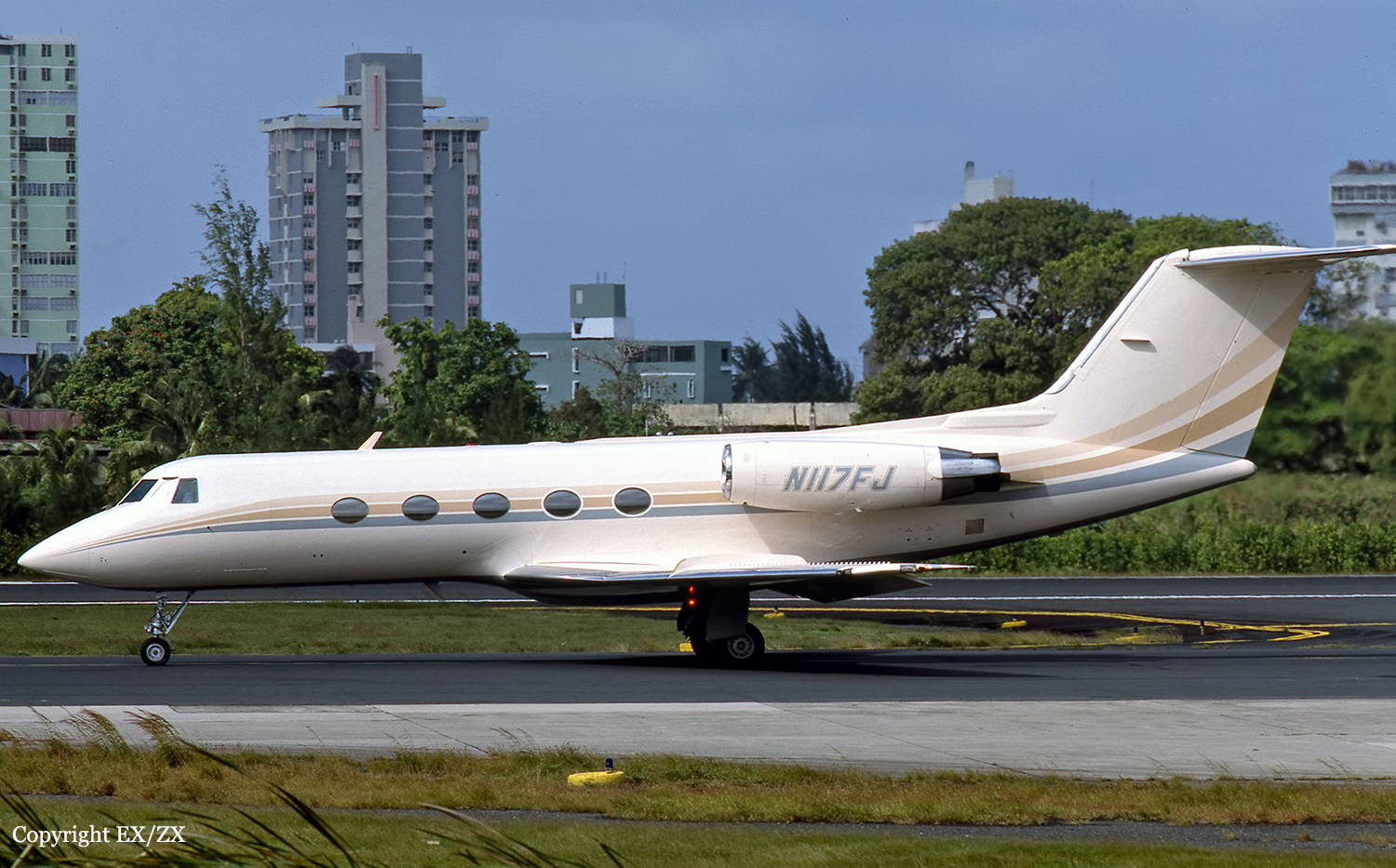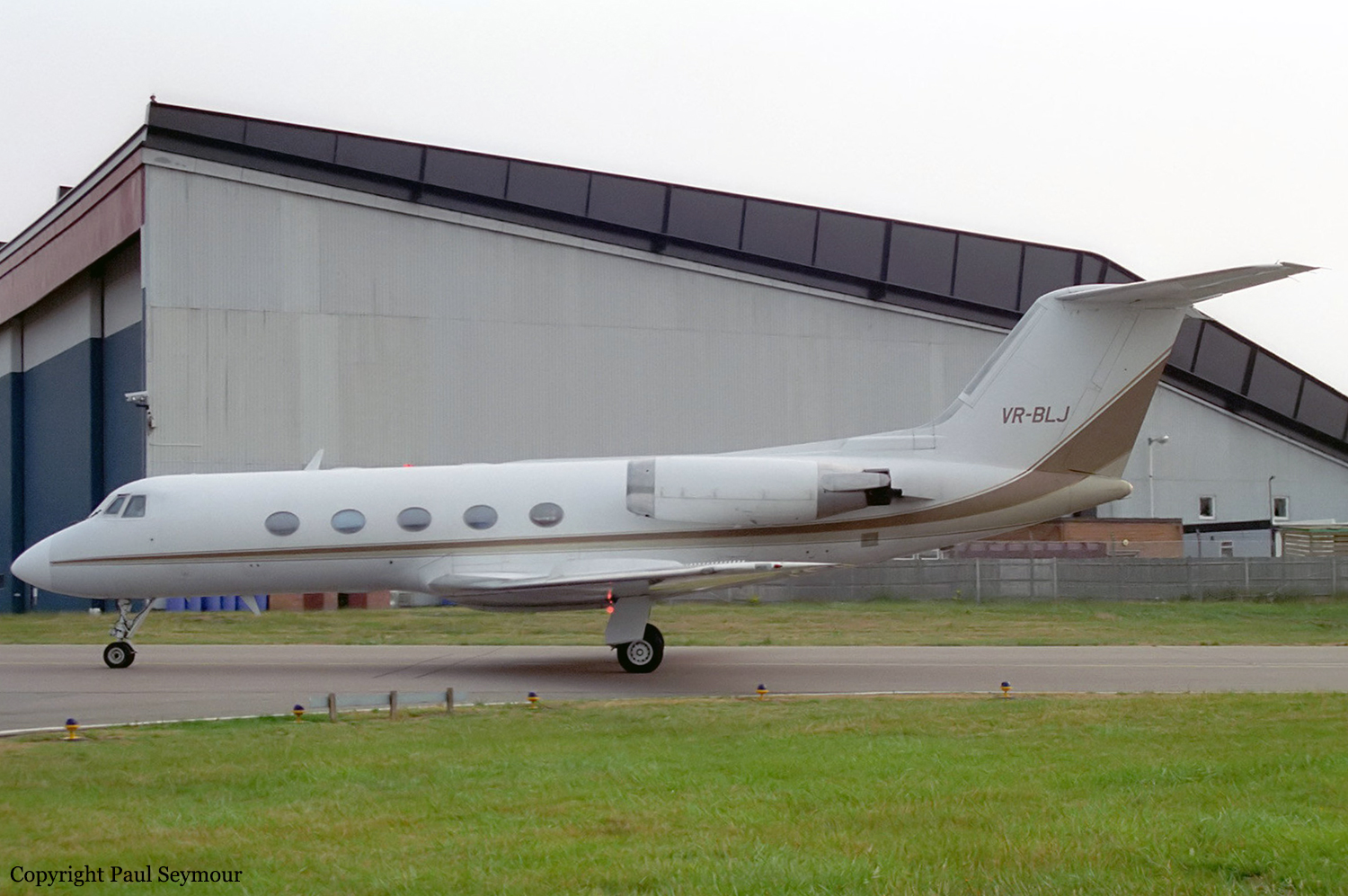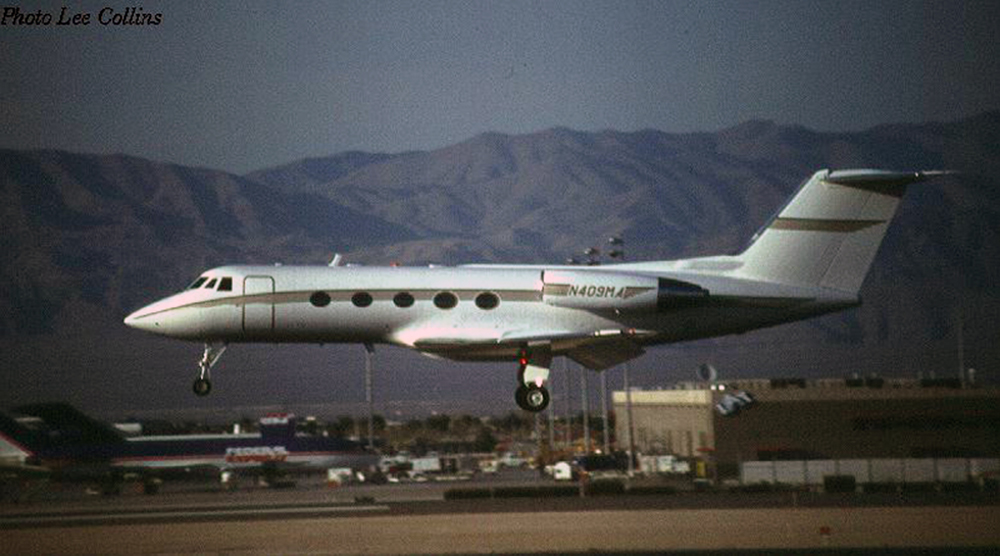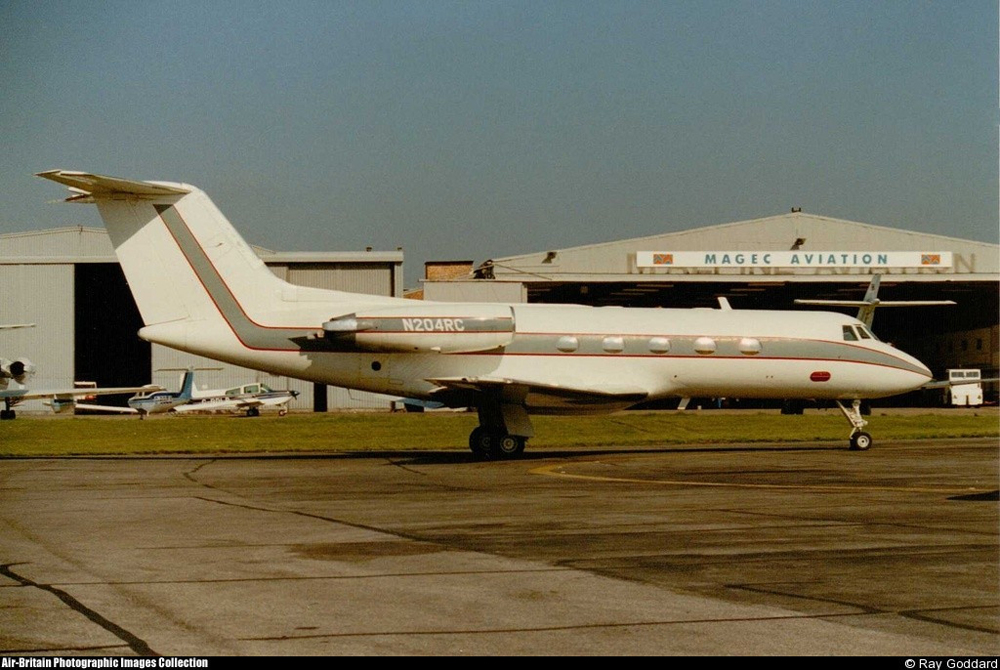Country
Crash of a Gulfstream GII in New York
Date & Time:
Mar 25, 1997 at 0510 LT
Registration:
N117FJ
Survivors:
Yes
Schedule:
Allentown - New York
MSN:
229
YOM:
1978
Crew on board:
2
Crew fatalities:
Pax on board:
2
Pax fatalities:
Other fatalities:
Total fatalities:
0
Captain / Total hours on type:
3860.00
Copilot / Total hours on type:
4000
Aircraft flight hours:
6743
Circumstances:
All positions at LaGuardia Tower were combined to the local control position from 0011 EST until after the accident. At about 0430 EST, ground personnel in 'Vehicle 1277' (communicating on ground control frequency), were cleared on runway 13/31 to perform 'lighting maintenance.' Later, during repair of centerline lights and while N117FJ was inbound to the airport, Vehicle 1277 stalled on runway 13/31. Personnel of Vehicle 1277 attempted to restart the vehicle, but were unable, so they shut off all vehicle lights to reduce electrical load, and again attempted to restart the vehicle, but to no avail. At 0507 (during darkness), N117FJ made initial call to the tower for landing. The controller acknowledged the call, scanned runway 13/31, did not see Vehicle 1277, and cleared N117FJ to land on runway 31. At 0510, personnel of Vehicle 1277 observed N117FJ in the approach/landing phase and radioed ground controller that they were stuck on the runway. The controller then radioed, 'go-around, aircraft on the runway go-around, aircraft on the runway go-around, seven fox juliet go-around.' Moments later, N117FJ impacted Vehicle 1277. The FAA ATC Handbook stated, 'Ensure that the runway to be used is clear of all known ground vehicles, equipment, and personnel before a departing aircraft starts takeoff or a landing aircraft crosses the runway threshold.'
Probable cause:
The tower controller's inadequate service by clearing the airplane to land on the same runway, where he had previously cleared a maintenance vehicle to perform maintenance to the runway centerline lights. Factors related to the accident were: darkness, partial failure of the runway centerline lights, the electric maintenance vehicle's loss of engine power, and a failure to have adequate emergency backup lighting.
Final Report:

Crash of a Gulfstream GII in Jos: 12 killed
Date & Time:
Jun 20, 1996 at 0736 LT
Registration:
VR-BLJ
Survivors:
No
Schedule:
Kaduna - Jos
MSN:
40
YOM:
1968
Crew on board:
4
Crew fatalities:
Pax on board:
8
Pax fatalities:
Other fatalities:
Total fatalities:
12
Circumstances:
The crew was completing an executive flight from Kaduna to Jos, carrying four crew members and eight passengers, among them Colonel Mohammed Wase. On approach to Jos Airport, the crew encountered limited visibility due to marginal weather conditions when the aircraft collided with a telecommunication antenna and crashed, bursting into flames. The aircraft was totally destroyed and all 12 occupants were killed.
Probable cause:
The following findings were reported:
- The antenna has been recently installed by the company Nitel in a prohibited area,
- The crew was unable to see and avoid the obstacles due to poor weather conditions,
- The aircraft was not properly aligned on the approach path due to a wrong calibration of the Jos VOR by 10°.
- The antenna has been recently installed by the company Nitel in a prohibited area,
- The crew was unable to see and avoid the obstacles due to poor weather conditions,
- The aircraft was not properly aligned on the approach path due to a wrong calibration of the Jos VOR by 10°.

Crash of a Gulfstream GII on Mt Sincholagua: 7 killed
Date & Time:
May 3, 1995 at 2345 LT
Registration:
N409MA
Survivors:
No
Schedule:
Buenos Aires – La Paz – Quito
MSN:
83
YOM:
1970
Crew on board:
2
Crew fatalities:
Pax on board:
5
Pax fatalities:
Other fatalities:
Total fatalities:
7
Captain / Total hours on type:
105.00
Copilot / Total hours on type:
105
Circumstances:
The aircraft was completing a charter flight from Buenos Aires to Quito with an intermediate stop in La Paz, carrying five passengers and two pilots. The descent to Quito-Mariscal Sucre Airport was initiated by night and good weather conditions. While descending to the altitude of 16,000 feet, the aircraft struck the slope of Mt Sincholagua (4,899 metres high) located about 45 km southeast of Quito. The wreckage was found the following morning and all seven occupants were killed.
Probable cause:
It was determined that the crew selected the wrong frequency, using Condorcocha VOR instead of the Monjas VOR. This caused the aircraft to follow a wrong pattern for the approach to Quito Airport. The following contributing factors were reported:
- The crew was not familiar with the region of Quito,
- The crew's experience on this type of aircraft was limited,
- Crew fatigue,
- The crew had a private conversation that was not in accordance with flight rules,
- The crew failed to proceed to appropriate controls during the descent,
- Poor approach planning.
- The crew was not familiar with the region of Quito,
- The crew's experience on this type of aircraft was limited,
- Crew fatigue,
- The crew had a private conversation that was not in accordance with flight rules,
- The crew failed to proceed to appropriate controls during the descent,
- Poor approach planning.

Crash of a Gulfstream GII near Keningau: 12 killed
Date & Time:
Sep 4, 1991 at 1411 LT
Registration:
N204C
Survivors:
No
Schedule:
Tokyo - Kota Kinabalu - Jakarta
MSN:
143
YOM:
1974
Crew on board:
3
Crew fatalities:
Pax on board:
9
Pax fatalities:
Other fatalities:
Total fatalities:
12
Circumstances:
The aircraft departed Tokyo-Narita Airport on a flight to Jakarta with a fuel stop at Kota Kinabalu Airport, carrying nine passengers and three crew members, among them four corporate members of the Conoco Group that leased the aircraft from DuPont de Nemours. Following an uneventful flight from Tokyo, the crew started the descent to Kota Kinabalu after being cleared to 10,000 then 5,000 feet. ATC instructed the crew to follow a route to the south (180°) and after passing VJN VOR at 4,000 feet, the crew could expect a clearance for an approach to runway 02. While descending to 4,000 feet, the aircraft disappeared from radar screens after it struck the slope of a mountain located in the Crocker Mountain Range, about 9 km northwest of Keningau and 57 km south of Kota Kinabalu Airport. The aircraft was destroyed upon impact and all 12 occupants were killed.
Probable cause:
The accident was the consequence of a series of error and omissions on part of the flying crew, resulting in a controlled flight into terrain.
The following contributing factors were reported:
- The pilots did not slow the aircraft to approach speed when directed by ATC (Event69). This error put the aircraft over VJN VOR/DME approximately 15 minutes earlier than ATC expected. The average ground speed inbound to the VOR/DME, between Event65 (DME 37 nmi) and Event104 (DME 0.0 nmi), was 400 knots.
- The pilots did not descend according to the published descent profile for their arrival sector. If the pilots had done this the aircraft would have been at 4,000 feet altitude over the VJN VOR/DME and in position for the initial approach segment for a VOR/DME approach procedure.
- The CVR recording indicates the pilots did not consider any published approach other than the ILS approach. Nevertheless, the pilots did not specifically request the ILS approach.
- The radiotelephone communication methods used by copilot Johnston were sloppy and not compliant with ICAO standards. Specifically, Johnston indicated to ATC he understood and would comply with the ATC directive to descend over the VJN VOR/DME to 9,500 feet. He did this by repeating (part of) the directive at Event118 suggesting to ATC he understood the directive and would comply.
- The pilots did not ask for clarification on the ATC directive to “descend south of the airfield” and put the aircraft on a heading 180o. The aircraft ground track suggested by Frank Petersen in his deposition and in his report titled “REPORT OF INVESTIGATION INTO THE ACCIDENT INVOLVING N204C” (April 24, 1992) has the aircraft flying outbound from the VJN VOR/DME on the 180° radial. This ground track can not be correct since it would put the aircraft 3 nmi east of the crash site at the time the pilots initiated the right turn. The 3 nmi distance could not have been covered in the 25 seconds between initiating the right turn and the impact. (At 230 knots it would take over 46 seconds to cover this distance.) Furthermore, the aircraft would have crashed before it did into the mountains along the 180° radial from the VJN VOR/DME.
- The cockpit conversation at Event179 indicates both pilots saw high terrain 52 seconds before impact. At this time the aircraft was less than 1 nmi from eye-level hills at 4,000 feet and less than 1.7 nmi from a peak at 4,875 feet. The pilots should have realized they were violating IFR approach procedures. (At this time of day the cloud cover near these hills would have been broken with cloud bases above 4,000 feet.) The pilots made no comment to ATC about the terrain or the cloud conditions.
Source: DuPont GII N204C Crash by Roger K. Parsons - Seagull Publishing, Houston, TX
The following contributing factors were reported:
- The pilots did not slow the aircraft to approach speed when directed by ATC (Event69). This error put the aircraft over VJN VOR/DME approximately 15 minutes earlier than ATC expected. The average ground speed inbound to the VOR/DME, between Event65 (DME 37 nmi) and Event104 (DME 0.0 nmi), was 400 knots.
- The pilots did not descend according to the published descent profile for their arrival sector. If the pilots had done this the aircraft would have been at 4,000 feet altitude over the VJN VOR/DME and in position for the initial approach segment for a VOR/DME approach procedure.
- The CVR recording indicates the pilots did not consider any published approach other than the ILS approach. Nevertheless, the pilots did not specifically request the ILS approach.
- The radiotelephone communication methods used by copilot Johnston were sloppy and not compliant with ICAO standards. Specifically, Johnston indicated to ATC he understood and would comply with the ATC directive to descend over the VJN VOR/DME to 9,500 feet. He did this by repeating (part of) the directive at Event118 suggesting to ATC he understood the directive and would comply.
- The pilots did not ask for clarification on the ATC directive to “descend south of the airfield” and put the aircraft on a heading 180o. The aircraft ground track suggested by Frank Petersen in his deposition and in his report titled “REPORT OF INVESTIGATION INTO THE ACCIDENT INVOLVING N204C” (April 24, 1992) has the aircraft flying outbound from the VJN VOR/DME on the 180° radial. This ground track can not be correct since it would put the aircraft 3 nmi east of the crash site at the time the pilots initiated the right turn. The 3 nmi distance could not have been covered in the 25 seconds between initiating the right turn and the impact. (At 230 knots it would take over 46 seconds to cover this distance.) Furthermore, the aircraft would have crashed before it did into the mountains along the 180° radial from the VJN VOR/DME.
- The cockpit conversation at Event179 indicates both pilots saw high terrain 52 seconds before impact. At this time the aircraft was less than 1 nmi from eye-level hills at 4,000 feet and less than 1.7 nmi from a peak at 4,875 feet. The pilots should have realized they were violating IFR approach procedures. (At this time of day the cloud cover near these hills would have been broken with cloud bases above 4,000 feet.) The pilots made no comment to ATC about the terrain or the cloud conditions.
Source: DuPont GII N204C Crash by Roger K. Parsons - Seagull Publishing, Houston, TX
Final Report:

Crash of a Gulfstream GII in Charallave: 4 killed
Date & Time:
Jun 17, 1991 at 2200 LT
Registration:
N204RC
Survivors:
No
Schedule:
Caracas - Charallave
MSN:
34
YOM:
1968
Crew on board:
2
Crew fatalities:
Pax on board:
2
Pax fatalities:
Other fatalities:
Total fatalities:
4
Circumstances:
The crew was completing a positioning flight from Caracas Intl Airport to Charallave-Óscar Machado Zuloaga. On descent, the crew was informed that the ILS glideslope for runway 10 was unserviceable so the captain decided to improvise an unapproved LOC/DME approach by night. The copilot was the pilot-in-command when, at an altitude of 2,500 feet on approach, the aircraft struck the slope of a mountain located 9,3 km from the airport. The aircraft disintegrated on impact and all four occupants were killed.
Probable cause:
Controlled flight into terrain following a wrong approach configuration that led the aircraft descending below the minimum safe altitude.


